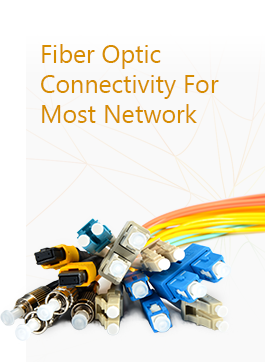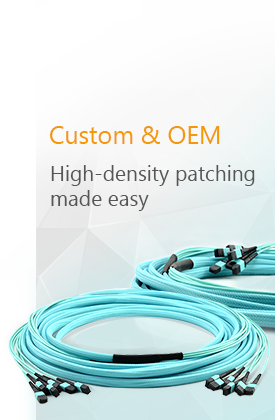A fiber patch cord, also known as a fiber optic patch cord or cable, is an optical fiber cable that has connectors installed on both ends. It is used to connect two optical fiber devices or interfaces, enabling signal transmission between them. Here are some key points about fiber patch cords:
- Composition: A fiber patch cord typically consists of one or more optical fibers of a certain length, enclosed in a protective jacket, and terminated with connectors at both ends.
- Purpose: These cords are primarily used for short-distance connections between devices, such as between switches and routers, servers and storage devices, or between optical transceivers and other equipment in a data center or telecommunication network.
- Types: Fiber patch cords come in various types, including simplex (single-fiber) and duplex (two-fiber) versions, as well as multi-fiber configurations like MPO (Multi-fiber Push-On), which can contain up to 24 or more fibers. The connectors can be of different types, such as SC, LC, FC, ST, etc., depending on the application and compatibility requirements.
- Applications: Fiber patch cords are widely used in data centers, local area networks (LANs), telecommunication networks, and other optical fiber communication systems. They are essential for establishing high-speed, high-bandwidth connections between devices and ensuring the stable transmission of signals.
- Performance: The performance of a fiber patch cord depends on several factors, including the type of fiber (e.g., single-mode or multi-mode), the quality of the connectors, and the overall construction of the cord. High-quality fiber patch cords are designed to minimize signal loss and ensure optimal performance in various environments.
In summary, a fiber patch cord is a versatile and essential component in optical fiber communication systems, enabling efficient and reliable signal transmission between devices.


